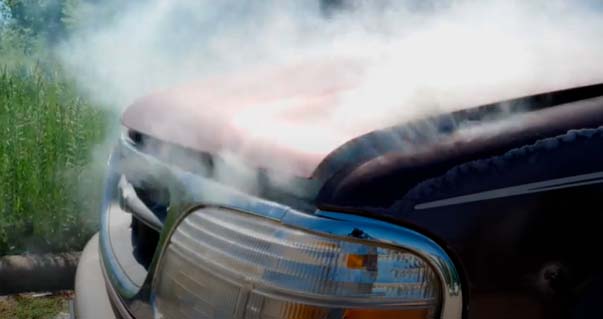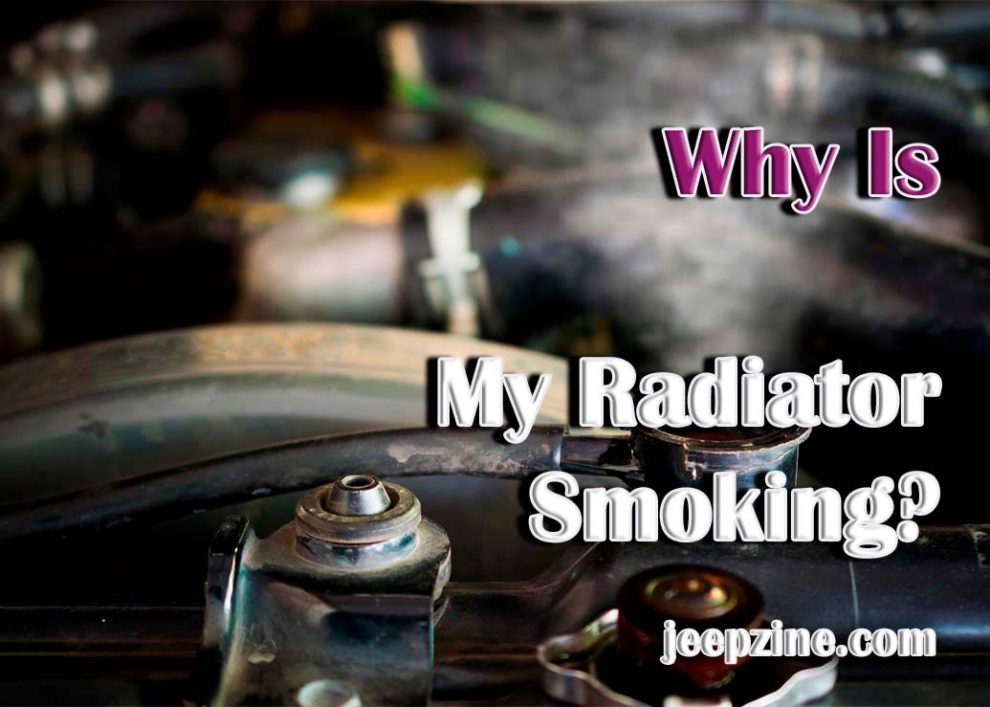A smoking car radiator can cause concern and indicate an underlying issue needing immediate attention. Whether you’re a seasoned car enthusiast or a novice driver, understanding the common causes of radiator smoking and diagnosing the problem is crucial for maintaining your vehicle’s health. So, why is your radiator smoking? In this article, we will explore the potential reasons behind a smoking radiator, guide you through the troubleshooting process, and provide the necessary steps to fix the issue.
Common Causes of Car Radiator Smoking
A smoking car radiator can indicate underlying issues within your vehicle’s cooling system. Understanding the common causes can help you pinpoint the problem and take appropriate measures to resolve it. Here are some of the most frequent culprits behind a smoking radiator:
-
Coolant leak: A leak in the radiator or one of the coolant hoses can result in low coolant levels. Insufficient coolant circulation can lead to overheating, causing the radiator to emit smoke. Look for signs of coolant pooling under your vehicle or a sweet smell in the engine compartment.
-
Damaged radiator: Physical damage, such as a puncture or crack in the radiator, can cause coolant to leak and result in smoking. This damage can be caused by road debris, accidents, or wear and tear over time.
-
Faulty radiator cap: The radiator cap maintains the pressure in the cooling system and regulates the coolant flow. It ensures that your car does not overheat. If it’s not functioning correctly, it may cause smoke from the radiator.
-
Blocked radiator fins: The radiator fins help dissipate heat from the coolant. If they become clogged with dirt, debris, or bugs, it restricts airflow, leading to inadequate cooling and potential smoking.
-
Failed water pump: The water pump circulates coolant throughout the engine. If it fails, it may lead to overheating and smoking of the radiator.
-
Thermostat issues: A faulty thermostat can disrupt the coolant flow, leading to overheating and smoking. It may get stuck in a closed position, preventing the coolant from reaching the radiator.
-
Blown head gasket: If the head gasket between the engine block and cylinder head fails, coolant can get into the combustion chamber and become pressurized, leading to excessive heat buildup in the cooling system. It can cause smoke to come out of the radiator.
Identifying the specific cause of your smoking radiator is crucial for implementing the appropriate repairs. The following section will discuss how to troubleshoot and diagnose the issue effectively.
How to Fix a Smoking Car Radiator

Additionally, check the radiator cap for any damage or improper sealing and consider replacing it if necessary. Clear any blockages from the radiator fins using compressed air or a soft brush to restore proper airflow. If you suspect a malfunctioning water pump or thermostat, have them tested and replaced if needed. For a blown head gasket, seek professional assistance for a thorough inspection and necessary repairs. Finally, ensure that your coolant levels are maintained at the recommended levels by topping up the reservoir with the correct coolant mixture. By following these steps, you can effectively address the smoking radiator issue and restore proper functioning to your car’s cooling system.
Signs That You Should Replace Your Car Radiator
There are several signs that your car’s radiator may need replacing. Be aware of the following:
-
Repeated Overheating: If your vehicle is overheating repeatedly even after repairs, the radiator might not be adequately cooling the engine.
-
Leaky Radiator: Persistent leaks that can’t be easily fixed may indicate that a complete replacement is more cost-effective.
-
Corrosion or Rust: Severe or widespread rust can impair the radiator’s functionality, necessitating a replacement.
-
Unusual Noises or Visible Damage: Any unusual sounds or visible physical damage, like cracks or punctures, could signal the need for a new radiator.
-
Constantly Contaminated Coolant: If the coolant is consistently dirty despite regular maintenance, this could indicate internal radiator issues that warrant a replacement.
Remember, always consult with a professional mechanic to assess the condition of your radiator and make the appropriate decision about replacement. In addition to these signs, conducting a Pressure Test Cooling System can help diagnose less obvious issues.
Conclusion
A smoking car radiator is a warning sign that something is wrong with your vehicle’s cooling system. By understanding the common causes of radiator smoking and following the necessary steps to troubleshoot and diagnose the issue, you can get to the root of the problem and take appropriate measures to fix it. Additionally, certain signs indicate it may be necessary to replace your radiator. Ignoring these warning signs can lead to further damage and costly repairs. If you suspect an issue with your car’s radiator, seek professional assistance for a thorough inspection and timely resolution of the problem.


Add Comment